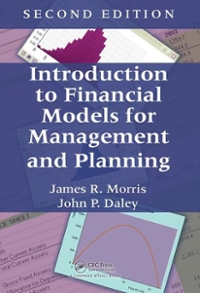






You are considering how to invest part of your retirement savings. You have decided to put $100,000 into three stocks: 59% of the money in GoldFinger (currently $19/share), 12% of the money in Moosehead (currently $85/share), and the remainder in Venture Associates (currently $3/share). Suppose GoldFinger stock goes up to $34/share, Moosehead stock drops to $59/share, and Venture Associates stock rises to $20 per share. a. What is the new value of the portfolio? b. What return did the portfolio earn? c. If you don't buy or sell any shares after the price change, what are your new portfolio weights? a. What is the new value of the portfolio? The new value of the portfolio is $ (Round to the nearest dollar.) Using the data in the following table, and the fact that the correlation of A and B is 0.64, calculate the volatility (standard deviation) of a portfolio that is 80% invested in stock A and 20% invested in stock B. 16% Year 2008 2009 2010 2011 2012 2013 Realized Returns Stock A Stock B 2% 17% 30% 8% 7% 9% -7% 5% 15% 13% 32% The standard deviation of the portfolio is %. (Round to two decimal places.) The following table contains monthly returns for Cola Co. and Gas Co. for 2010 (the returns are shown in decimal form, i.e., 0.035 is 3.5%). Using this table and the fact that Cola Co. and Gas Co. have a correlation of 0.6084, calculate the volatility (standard deviation) of a portfolio that is 55% invested in Cola Co. stock and 45% invested in Gas Co. stock. Calculate the volatility by a. Using the formula: X Var (Ro) = w? SD (R1) 2 + w SD (R2) +2W, W2 Corr (R1,R2) SD (R1) SD (R2) Data Table b. Calculating the monthly returns of the portfolio and computing its volatility directly. c. How do your results compare? Month Cola Co. Gas Co. a. Using the formula: January -0.1084 -0.0600 Var(Ro) = w} SD(R1) 2 + w SD (R2) + 2W, W2 Corr (R1,R2) SD (R1) SD (R2) February 0.0236 0.0128 March 0.0660 -0.0186 The volatility (standard deviation) of the portfolio is %. (Round to two decimal places.) April 0.0201 -0.0190 May 0.1836 0.0740 O June -0.0122 -0.0026 0.0836 0.0225 -0.0689 -0.0246 -0.0604 -0.0200 July August September October November December 0.1361 0.0000 0.0351 0.0468 0.0054 0.0222 Print Done Using the data from Table 12.3 , what is the volatility of an equally weighted portfolio of Microsoft and Coca-Cola stock? The volatility of the portfolio is %. (Round to one decimal place.) x Data Table TABLE 12.3 Estimated Annual Volatilities and Correlations for Selected Stocks (Based on Monthly Returns, January 2006 December 2015) Cisco 28% Boeing 26% 0.52 0.52 0.10 0.28 0.48 0.10 Standard Microsoft Starbucks Netflix Coca-Cola McDonald's Deviation 25% 29% 61% 16% 14% Microsoft 1 0.35 0.18 0.40 0.43 Starbucks 0.35 1 0.19 0.23 0.17 Netflix 0.18 0.19 1 0.00 0.13 Coca-Cola 0.40 0.23 0.00 1 0.59 McDonald's 0.43 0.17 0.13 0.59 1 Cisco 0.52 0.52 0.10 0.27 0.28 Boeing 0.28 0.48 0.10 0.34 0.37 Source: Authors' calculations based on data from The Center for Research in Security Prices. 0.27 0.34 0.28 0.37 1 0.46 0.46 1 Print Done Arbor Systems and Gencore stocks both have a volatility of 43%. Compute the volatility of a portfolio with 50% invested in each stock if the correlation between the stocks is (a) +1.00, (b) 0.50, (c) 0.00, (d) -0.50, and () - 1.00. In which of the cases is the volatility lower than that of the original stocks? If the correlation is +1.00, the volatility of the portfolio is %. (Round to one decimal place.) The risk-free rate is 3% and you believe that the S&P 500's excess return will be 10% over the next year. If you invest in a stock with a beta of 1.2 (and a standard deviation of 30%), what is your best guess as to its expected excess return over the next year? The expected excess return over the next year is %. (Round to two decimal places.) EJH has a beta of 1.2, CSH has a beta of 0.6, and KMS has a beta of 1. If you put 29% of your money in EJH, 22% in CSH, and 49% in KMS, what is the beta of your portfolio? The beta of your portfolio is (Round to two decimal places.)













